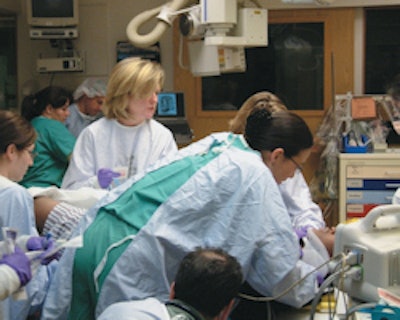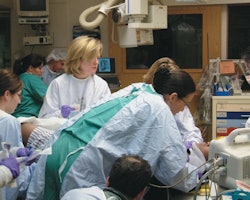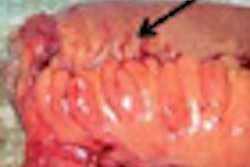
MDCT may be used half as often as general radiography for examining children in the pediatric trauma center at Johns Hopkins University (JHU), but the modality is responsible for 91% of the ionizing radiation exposure associated with diagnosing their injuries.
The findings, drawn from a retrospective evaluation of patient records from mid-2004 to mid-2005, are helping ER physicians and imaging technologists understand the potential dangers of CT and the value of dose reduction for their youngest patients.
Based on a manual file-by-file analysis, pediatric radiology fellow Dr. Marissa Brunetti analyzed imaging exams performed on 719 patients who were younger than 15 years old when they were transported to JHU in Baltimore for emergency trauma treatment. Brunetti excluded the experiences of another 226 young patients because of missing medical record data. She reported the results of the study at the 2009 RSNA meeting.
The high treatment volume at JHU stems from the hospital's designation as Maryland's official pediatric trauma referral center, said Mahadevappa Mahesh, Ph.D., a co-author and JHU's chief physicist. Critically injured children are transported to Johns Hopkins from every community in the state, and 65 children are treated on a typical day.
The average age of children in the study was 7.8 years, and 62% were boys. Severity scores available for 653 cases indicated that 86% involved minor injuries, 12% were severe, and 2% were critical.
The results showed that radiography is used far more often than CT and fluoroscopy for imaging these cases. Plain-film radiography accounted for two-thirds (67%) of the procedures, compared with one-third (32%) for CT and only 1% for fluoroscopy. No one was evaluated with nuclear imaging.
 |
| Imaging utilization data remind ER staff to keep radiation exposure in mind when treating trauma patients. Image courtesy of JHU. |
The researchers did not examine ultrasound or MRI utilization because neither emits ionizing radiation. Practical experience also suggested that these modalities are rarely ordered for children in an emergency setting, Mahesh said.
Though CT was used far less often than conventional x-ray, it contributed 91% of the total estimated radiation dose to the patient population, compared with 8% for radiography. The typical CT scan exposes patients to 5-7 mSv of radiation, while a routine radiograph involves 0.5 mSv, he said.
Overall, patients were exposed to an average dose of 12.8 ± 12 mSv (range, 0-73.5 mSv). High dose exposure strongly correlated with trauma severity and hospital admission. Children involved in motor vehicle accidents had the highest mean doses (18 mSv), and pedestrian accidents (15.8 mSv) and bicycle mishaps (13.4 mSv) also produced relatively high exposure levels.
Children from 6 to 9 years old were exposed to the highest average radiation dose (about 16 mSv), and those in the range of 10 to 14 had the lowest average dose (about 12 mSv), although these calculations may have been affected by the researchers' reliance on indirect measures to estimate dose. Gender and race did not affect radiation levels, Mahesh said.
The radiation exposure for individual patients was calculated by multiplying the number of procedures for a specific modality by its average effective dose levels measured during earlier research by Mahesh and colleagues at JHU.
"We were more interested in seeing the number of imaging procedures done on the pediatric population rather than calculating highly accurate dosages, because that is not possible right now," Mahesh said.
Still, the imbalance between the relatively infrequent clinical use of CT compared to radiography and its huge contribution to radiation dose in the ER is instructive, he said. A slight shift in ER physician preference toward using more CT would lead to a large increase in pediatric radiation exposure. Technologists should also to be aware of the need to minimize dose because they still must manually change scan parameters during every procedure to adjust for the patient's size and weight, Mahesh said.
A larger prospective study is planned at JHU to confirm the results.
By James Brice
AuntMinnie.com contributing writer
April 14, 2010
Related Reading
CT beats x-ray for pediatric cervical spine trauma, February 4, 2010
Studies address need to reduce CT dose in emergency settings, October 17, 2008
Use of pediatric head CT growing steadily in emergency departments, May 4, 2004
Copyright © 2010 AuntMinnie.com




















